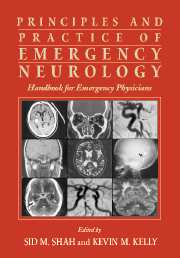Crossref Citations
This Book has been
cited by the following publications. This list is generated based on data provided by Crossref.
Ritchie, David
and
Nierenberg, Barry
2011.
Encyclopedia of Child Behavior and Development.
p.
773.
Alteveer, Janet G.
2012.
An Introduction to Clinical Emergency Medicine.
p.
357.
D’Souza, Neil M.
Almarzouqi, Sumayya J.
Morgan, Michael L.
and
Lee, Andrew G.
2015.
Encyclopedia of Ophthalmology.
p.
1.
Yue, John K.
Winkler, Ethan A.
Sharma, Sourabh
Vassar, Mary J.
Ratcliff, Jonathan J.
Korley, Frederick K.
Seabury, Seth A.
Ferguson, Adam R.
Lingsma, Hester F.
Deng, Hansen
Meeuws, Sacha
Adeoye, Opeolu M.
Rick, Jonathan W.
Robinson, Caitlin K.
Duarte, Siena M.
Yuh, Esther L.
Mukherjee, Pratik
Dikmen, Sureyya S.
McAllister, Thomas W.
Diaz-Arrastia, Ramon
Valadka, Alex B.
Gordon, Wayne A.
Okonkwo, David O.
and
Manley, Geoffrey T.
2017.
Temporal profile of care following mild traumatic brain injury: predictors of hospital admission, follow-up referral and six-month outcome.
Brain Injury,
Vol. 31,
Issue. 13-14,
p.
1820.
D’Souza, Neil M.
Almarzouqi, Sumayya J.
Morgan, Michael L.
and
Lee, Andrew G.
2018.
Encyclopedia of Ophthalmology.
p.
661.





